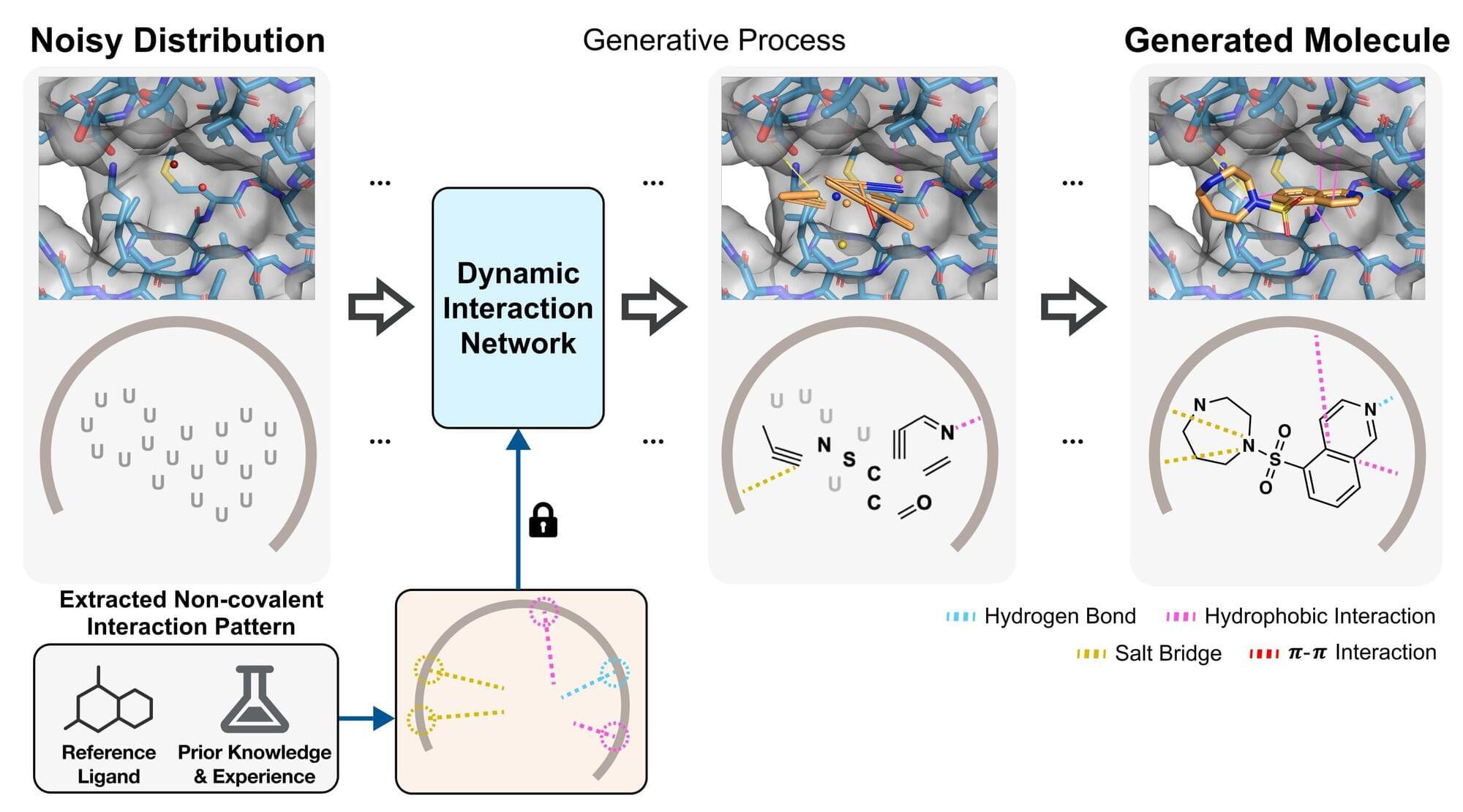ARC Prize
Category: robotics/AI – Page 136


AI automatically designs optimal drug candidates for cancer-targeting mutations
Traditional drug development methods involve identifying a target protein (e.g., a cancer cell receptor) that causes disease, and then searching through countless molecular candidates (potential drugs) that could bind to that protein and block its function. This process is costly, time-consuming, and has a low success rate.
KAIST researchers have developed an AI model that, using only information about the target protein, can design optimal drug candidates without any prior molecular data—opening up new possibilities for drug discovery. The research is published in the journal Advanced Science.
The research team led by Professor Woo Youn Kim in the Department of Chemistry has developed an AI model named BInD (Bond and Interaction-generating Diffusion model), which can design and optimize drug candidate molecules tailored to a protein’s structure alone—without needing prior information about binding molecules. The model also predicts the binding mechanism (non-covalent interactions) between the drug and the target protein.

LLMs, Cellular Automata & the Brain—a conversation with Duggan Hammock of the Wolfram Institute
What do large language models, cellular automata, and the human brain have in common? In this polymath salon, I talk with Dugan Hammock from the Wolfram Institute to discuss the deep links between these seemingly disparate fields.
Highlights include:
Computational Irreducibility: Why we can’t take shortcuts in complex systems—whether it’s a simple cellular automaton or a sophisticated LLM generating text.
The Power of Autoregression: How the simple, step-by-step process of predicting the next element can give rise to incredible complexity and human-like language.
The Nature of Thinking: Whether our own thought processes are fundamentally autoregressive and sequential, or if there’s a different, parallel mode of cognition at play.
Memory and Consciousness: The critical role of a system’s “memory” or history in shaping its future, and how this relates to our own awareness and sense of self.




NVIDIA Opens Portals to World of Robotics With New Omniverse Libraries, Cosmos Physical AI Models and AI Computing Infrastructure
NVIDIA today announced new NVIDIA Omniverse™ libraries and NVIDIA Cosmos™ world foundation models (WFMs) that accelerate the development and deployment of robotics solutions.